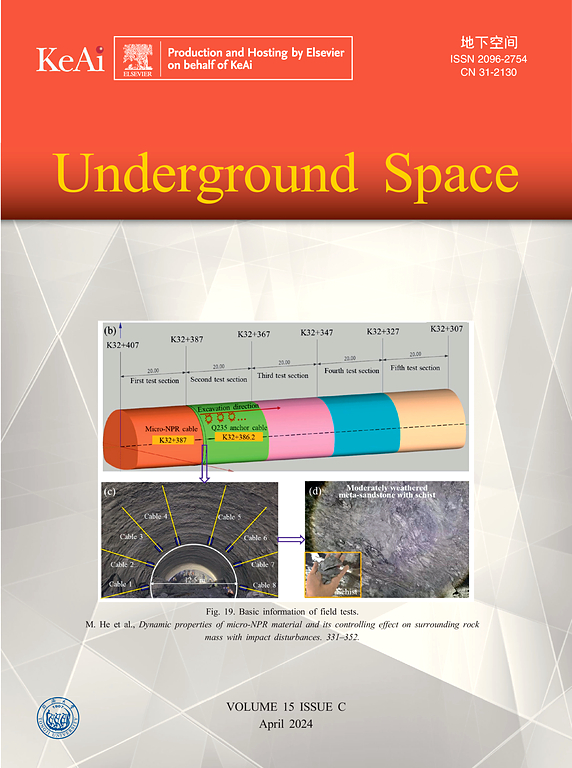人工智能辅助地下工程岩爆破坏规模短期决策
IF 8.3
1区 工程技术
Q1 ENGINEERING, CIVIL
引用次数: 0
摘要
岩爆给地下工程项目带来了严重的风险,包括采矿和隧道建设,在这些项目中,岩石的突然破裂可能导致大量基础设施的破坏和人员的生命损失。准确评估岩爆损害对安全、有效降低风险至关重要。本文研究了基于贝叶斯优化(BO)的集成机器学习模型在预测岩爆损伤规模中的有效性。使用254个样本的数据集对包括随机森林(RF)在内的9种分类器算法进行了评估。研究考虑了应力条件、支护系统能力、开挖跨度、地质特征、地震震级、峰值颗粒速度、岩石密度等因素作为输入变量。岩爆损伤等级作为目标变量,根据位移岩体划分为四个严重等级。在评估的模型中,BO-RF模型的预测精度和泛化能力最高,达到92%的测试准确率。BO-RF模型在多标准评价框架中也名列前茅。这个设计的排名系统强调了评估模型在训练和未知测试数据上的性能的重要性,以确保鲁棒泛化。研究结果强调了BO-RF在加强岩爆风险评估和为地下工程应用提供可靠的预测见解方面的有效性。本文章由计算机程序翻译,如有差异,请以英文原文为准。
AI-aided short-term decision making of rockburst damage scale in underground engineering
Rockbursts pose severe risks to underground engineering projects, including mining and tunnelling, where sudden rock failures can lead to substantial infrastructure damage and loss of human lives. An accurate assessment of rockburst damage is essential for safety and effective risk mitigation. This study investigates the effectiveness of ensemble machine learning models optimized through Bayesian optimization (BO) in predicting rockburst damage scales. Nine classifier algorithms, including random forest (RF), were evaluated using a dataset of 254 samples. The research considered factors such as stress conditions, support system capacity, excavation span, geological characteristics, seismic magnitude, peak particle velocity, and rock density as input variables. The rockburst damage scale, categorized into four severity levels based on displaced rock mass, served as the target variable. Among the models evaluated, BO-RF model demonstrated the highest predictive accuracy and generalization capability, achieving 92% testing accuracy. BO-RF model also ranked top in a multi-criteria evaluation framework. This devised ranking system underscores the importance of evaluating model performance on both training and unseen testing data to ensure robust generalization. The findings underscore the effectiveness of BO-RF in enhancing rockburst risk assessment and providing reliable predictive insights for underground engineering applications.
求助全文
通过发布文献求助,成功后即可免费获取论文全文。
去求助
来源期刊

Underground Space
ENGINEERING, CIVIL-
CiteScore
10.20
自引率
14.10%
发文量
71
审稿时长
63 days
期刊介绍:
Underground Space is an open access international journal without article processing charges (APC) committed to serving as a scientific forum for researchers and practitioners in the field of underground engineering. The journal welcomes manuscripts that deal with original theories, methods, technologies, and important applications throughout the life-cycle of underground projects, including planning, design, operation and maintenance, disaster prevention, and demolition. The journal is particularly interested in manuscripts related to the latest development of smart underground engineering from the perspectives of resilience, resources saving, environmental friendliness, humanity, and artificial intelligence. The manuscripts are expected to have significant innovation and potential impact in the field of underground engineering, and should have clear association with or application in underground projects.
 求助内容:
求助内容: 应助结果提醒方式:
应助结果提醒方式:


